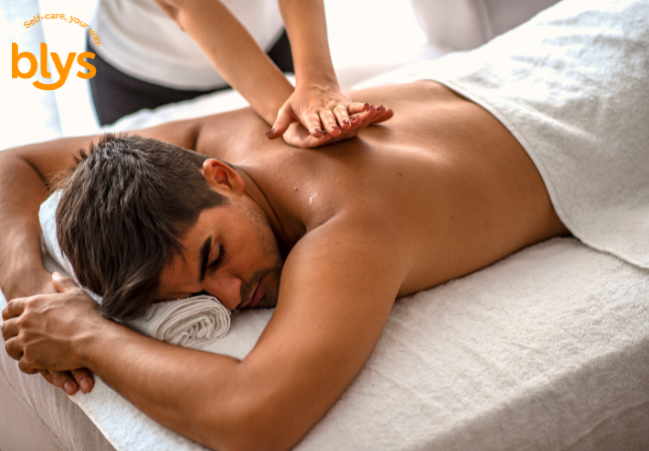
Massage therapy isn’t one-size-fits-all. Each massage style is designed with a specific purpose in mind, whether it’s easing chronic pain, reducing stress, improving movement, or supporting recovery after exercise or injury.
Choosing the right one can make a real difference in how your body feels and heals. Many people book a massage without knowing which type suits their needs. If you’ve ever left a session feeling underwhelmed or more sore than expected.
It may not have been the technique it might have just been the wrong style for your body at that time. Understanding the difference between massage types can help you make informed choices and get better results from every session.
For instance, deep tissue massage is ideal for breaking up knots and targeting stubborn muscle tension. Swedish massage offers a lighter, calming experience that improves circulation and soothes the nervous system.
Other options like remedial and sports massage provide specific benefits depending on your activity level or recovery needs. Whether you’re looking to unwind, relieve pain, or improve flexibility, it starts with knowing what each massage can offer.
Deep Tissue Massage: Best for Chronic Tension and Pain
Deep tissue massage is one of the most effective options for people who experience long-term muscle tension, poor posture, or old injuries that keep flaring up. Unlike lighter massage styles, this technique works through the deeper layers of muscle and connective tissue to bring lasting relief.
Here’s what makes deep tissue massage stand out:
- Targets deeper muscle layers and fascia to break up knots and adhesions
- Ideal for chronic pain postural imbalances, and repetitive strain injuries
- Uses firm, slow pressure applied through fingers, knuckles, and elbows
- Can cause mild soreness after a session: especially in areas with long-standing tension
- Leads to longer-lasting results like improved mobility and reduced stiffness
- Supports overall well-being, including stress reduction and improved blood pressure, according to the.
It’s especially helpful for people with desk jobs, athletes, or anyone who feels like they need more than a general relaxation massage. While it may not always feel soothing in the moment, the relief it brings in the days after is what keeps clients coming back.
Swedish Massage: Best for Relaxation and Circulation
Swedish massage is often considered the classic go-to for full-body relaxation. It’s one of the most common styles offered worldwide and is especially ideal for those looking to reduce stress, improve circulation, and ease mild tension.
For many clients booking with Blys, this style is their introduction to massage therapy—and for good reason.
1. Gentle pressure with flowing strokes
At the core of Swedish massage is its signature use of long, gliding strokes that move in the direction of blood returning to the heart. These strokes are performed with light to moderate pressure, making them suitable for clients who may be sensitive or new to massage.
The rhythm of these movements helps calm the body while boosting blood flow and warming the surface muscles.
2. Supports lymphatic flow and detoxification
In addition to improving circulation, Swedish massage stimulates the lymphatic system. This helps the body flush out toxins, reduce mild swelling, and support the immune system. It’s a good option for people who feel sluggish, bloated, or in need of a reset.
3. Calms the nervous system
The repetitive, slow movements of Swedish massage help slow the heart rate and lower cortisol levels. This makes it highly effective for managing stress and anxiety. It’s also been associated with improved sleep and a general sense of well-being after each session.
4. Eases everyday tension and muscle fatigue
This massage is ideal for those dealing with day-to-day tension, such as tight shoulders or lower back discomfort from sitting for long hours. While it doesn’t work into the deeper layers, it provides noticeable relief for mild aches caused by lifestyle habits.
5. Offers a full-body soothing experience
Swedish massage is a complete head-to-toe treatment. It leaves clients feeling lighter, calmer, and more balanced without any of the soreness that can come with deeper techniques.
If you’re not dealing with chronic pain but still want to feel better in your body, Swedish massage is a reliable, restorative option. It’s the kind of treatment that prioritizes your comfort and helps bring your stress levels back down.
Whether you’ve had a long week, feel overwhelmed, or just want to take a moment to pause, Swedish massage delivers what your body and mind need most.
You can also learn more about the key benefits of deep tissue massage and how it relieves pain and muscle pressure effectively.
Remedial Massage: Best for Injury Recovery
Remedial massage is a tailored, clinical therapy focused on identifying and treating specific musculoskeletal issues. It’s commonly recommended by healthcare providers after an injury, surgery, or in response to chronic dysfunction.
If you’re recovering from a physical setback and need more targeted treatment than a relaxation massage, remedial massage may be the ideal choice.
-
Suitable for post-injury or post-surgery recovery
Remedial massage supports the body’s healing process by reducing scar tissue, improving joint mobility, and promoting muscle repair.
Healthcare providers often recommend it for managing sprains, strains, or complications following orthopedic procedures.
-
Begins with a thorough assessment
A qualified therapist will assess your posture, range of motion, and medical history to pinpoint the root causes of pain or restriction. This evaluation guides a highly individualized treatment plan.
-
Uses targeted techniques and stretching
The therapy involves clinical methods such as trigger point release, myofascial work, deep tissue massage, and passive stretching all customised to your specific area of concern
-
Designed to restore function and mobility
The primary goal is to correct muscular imbalances, improve posture, and support pain-free movement particularly beneficial for those recovering from sports injuries, motor vehicle accidents, or chronic conditions.
-
May be claimable with private health insurance
In the US, many health funds provide rebates for remedial massage when performed by an accredited therapist, making it an affordable option for ongoing treatment.
According to the Better Health Channel, remedial massage is a clinical technique aimed at treating biomechanical dysfunction or injury to restore normal health and function
Sports Massage: Best for Active Lifestyles
Sports massage is designed for people who live active lives. Whether you’re training for a race, working out at the gym, or simply staying active, this style of massage supports muscle function and overall performance.
Sports massage comes in two main forms: pre-event to prepare muscles, increase flexibility, and reduce the risk of injury during activity, and post-event to speed up recovery, ease soreness, and help muscles return to normal function.
Here’s what sports massage brings to the table:
Enhances flexibility and range of motion
A large meta-analysis (covering 29 studies) found that while sports massage may not directly improve strength, sprint, or endurance performance, it does produce small but meaningful gains in flexibility and helps with delayed-onset muscle soreness (DOMS).
Speeds up recovery and reduces soreness
Another review revealed that sports massage helps lower DOMS and can improve mood, reduce perceived fatigue, and support a sense of recovery—benefits that are helpful during training cycles or after intense workouts.
Common among athletes and regular exercisers
Designed to support performance, prevent injury, and relieve muscle tightness, sports massage is often used by professional athletes, sports enthusiasts, gym-goers, and active individuals.
Can be firm but mobility-focused
While the pressure used in sports massage may feel firm, it isn’t always as intense as deep tissue massage. The emphasis is on techniques like stretching, soft tissue release, and joint mobilization to support muscle preparation and recovery.
If you’re dealing with ongoing discomfort, you might also want to read our guide on how deep tissue massage helps with chronic pain relief for more insight.
Quick Comparison: Which Massage Type Suits You Best?
Still unsure which massage is the right choice for your needs? Here’s a simple side-by-side comparison to help you decide.
Whether you’re seeking pain relief, injury recovery, or just a moment to unwind, this table breaks down the core benefits of each massage style.
| Massage Type | Best For | Pressure | After-Effects |
| Deep Tissue | Chronic pain, tension, old injuries | Firm to very firm | Soreness, deep relief |
| Swedish | Stress, relaxation, first-timers | Light to medium | Calm, refreshed |
| Remedial | Injury rehab, mobility issues | Variable (tailored) | Improved range of motion |
| Sports | Active bodies, performance support | Medium to firm | Faster recovery, looser muscles |
This comparison is a good starting point, but keep in mind that your goals and preferences may shift over time. Some people combine massage types over a few sessions, especially if they alternate between relaxation and active recovery needs.
If you’re still unsure, your Blys therapist can tailor the session based on what your body needs most on the day.
When to Choose Deep Tissue Over Other Types
Deep tissue massage can be the most effective choice when your discomfort runs deeper than general tension or everyday stress.
While lighter styles like Swedish massage work well for relaxation, deep tissue is specifically designed to reach beneath the surface and target the source of chronic pain.
You might want to book a deep tissue massage if:
- You’re dealing with persistent pain or stiffness: If certain areas of your body always feel tight, like your neck, shoulders, or lower back, deep tissue techniques can break down adhesions and release long-standing tension.
- You have fatigue or postural strain from a desk job: Sitting for long hours can lead to imbalances in posture and chronic muscle tightness. Deep tissue work helps lengthen and reset those overworked muscles, especially in the upper back, hips, and neck.
- You’re experiencing limited mobility or recurring injuries: When old injuries flare up or restrict your range of motion, deep tissue massage can support recovery by improving circulation to those affected areas and releasing restricted fascia.
- You’ve already tried relaxation massage, but it wasn’t enough: If a Swedish massage left you feeling calm but didn’t resolve the deeper pain or tightness, it may be time to try a more intensive approach.
According to a review published by the National Institutes of Health, deep tissue massage has been associated with measurable improvements in pain, muscle function, and even blood pressure, making it a reliable option for more complex muscle concerns.
Before choosing any massage, consider your health conditions and goals. Deep tissue is ideal for those ready to address stubborn tension head-on and commit to longer-lasting results.
When to Choose Other Massage Types Instead
Deep tissue massage is effective, but it’s not always the right fit. In certain situations, other massage styles may be more appropriate depending on your comfort level, recovery stage, or goals.
If you’re new to massage or prefer a gentler touch, Swedish massage is a better place to start. Its light to medium pressure provides relaxation without discomfort, making it ideal for first-time clients or those sensitive to firm techniques.
For those recovering from surgery or under medical care, it’s best to speak with a doctor first. If cleared, remedial massage is often the recommended option. It’s more clinical and tailored, allowing therapists to work safely around injury sites and help restore movement.
If you’re dealing with a specific injury, remedial massage provides focused treatment to support rehabilitation. It targets the root of the issue, using techniques like stretching and trigger point work to improve mobility.
For active individuals, sports massage helps prepare muscles before activity or speed up recovery after. It supports flexibility and performance without the deeper intensity of corrective styles.
The right massage depends on your body and goals. A Blys therapist can always help you choose what suits you best.
Listen to Your Body With Blys
Choosing the right massage isn’t just about picking a style that sounds good it’s about tuning into what your body actually needs. Whether you’re dealing with lingering pain, recovering from an injury, or simply feeling the weight of a stressful week.
There’s a massage type that can support your goals. What works for one person may not work for another, and that’s okay. You might find deep tissue massage incredibly effective after a long period of muscle tightness.
While Swedish massage may be perfect when your focus is on slowing down and relaxing. If you’re recovering from an injury or training regularly, remedial or sports massage might be more appropriate.
Don’t be afraid to explore different options over time. Your needs may change, and your therapist can always adjust techniques, pressure, and focus areas based on how you’re feeling that day.
Ready to try what’s right for your body? Book your massage with Blys and customize your session from the comfort of home.





